23+ Sample Property Purchase Proposal
-

Property Purchase and Development Proposal
download now -
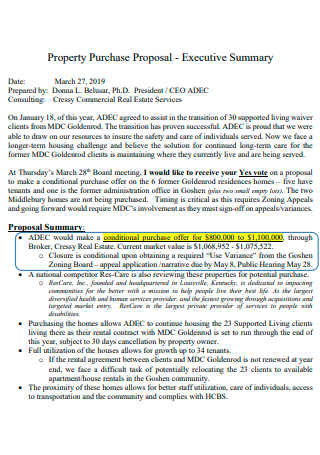
Printable Property Purchase Proposal
download now -
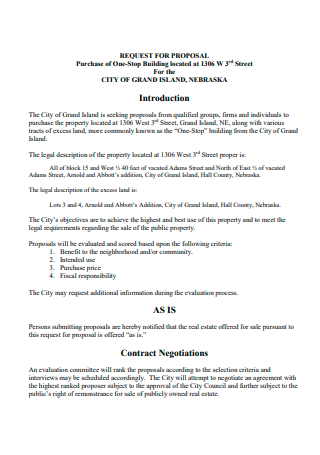
Property Purchase Request For Proposal
download now -

Personal Property Purchase Oral Bid Proposal Form
download now -

Property Purchase of Land Proposal Form
download now -
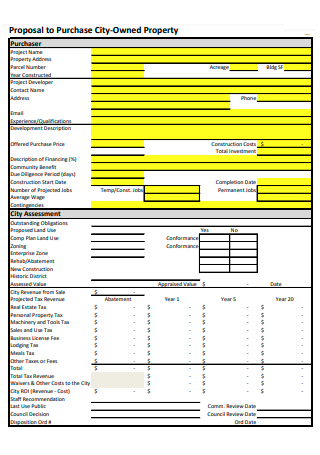
City-Owned Property Purchase Proposal
download now -
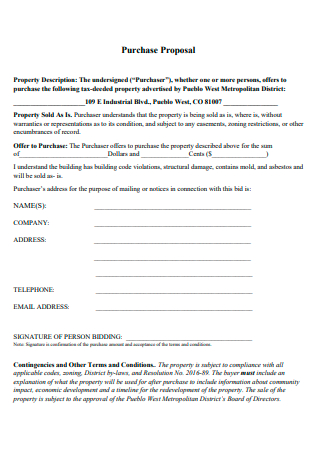
Basic Property Purchase Proposal
download now -
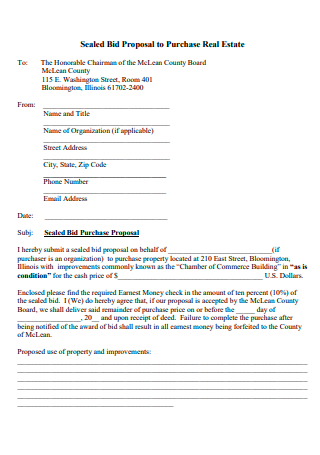
Property Purchase Real Estate Proposal
download now -

Real Property Purchase Proposal
download now -

Property Checklist Purchase Proposal
download now -
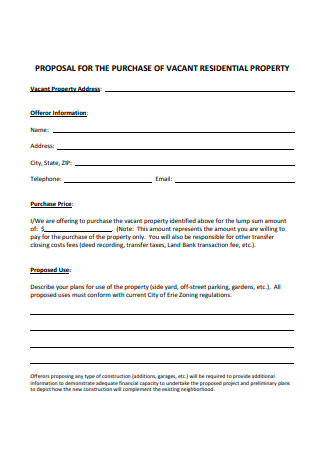
Vacant Residential Property Purchase Proposal
download now -
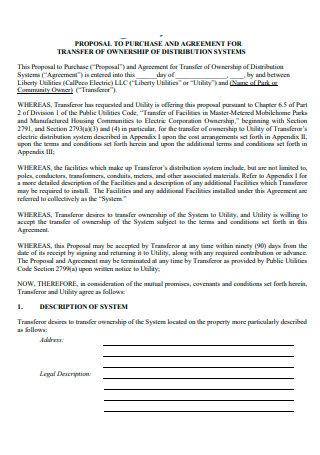
Property Purchase and Agreement Proposal
download now -
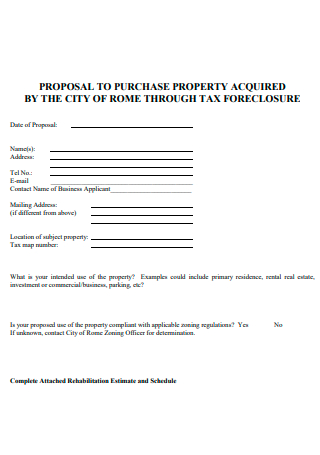
Property Acquired Purchase Proposal
download now -
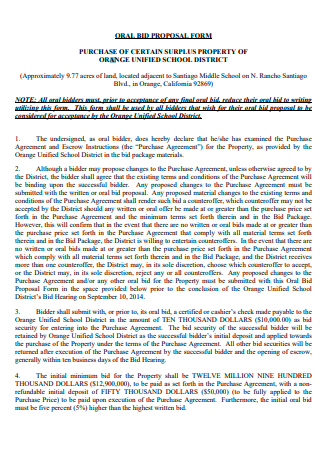
Surplus Property Purchase Proposal
download now -
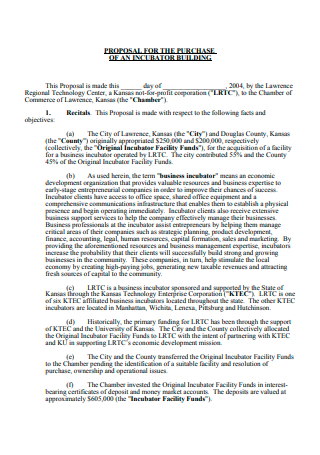
Property Building Purchase Proposal
download now -
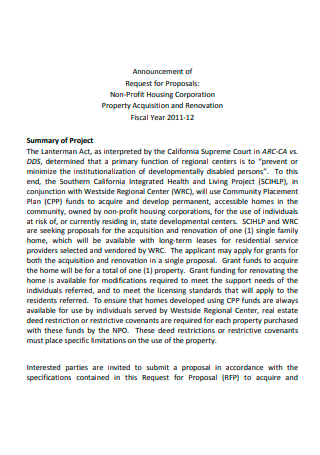
Property Acquisition and Renovation Purchase Proposal
download now -
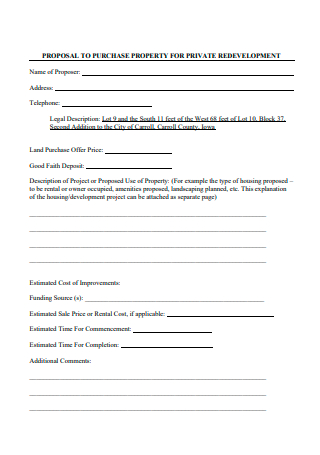
Property For Private Redevelopment Purchase Proposal
download now -

Property Purchase Proposal Form
download now -
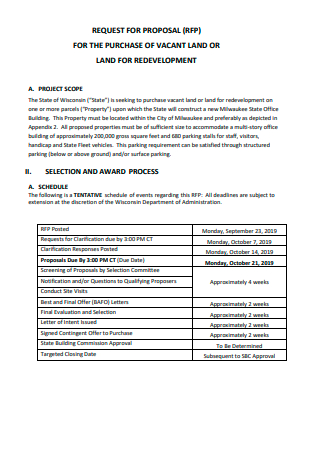
Property Purchase of Vacant Land Proposal
download now -
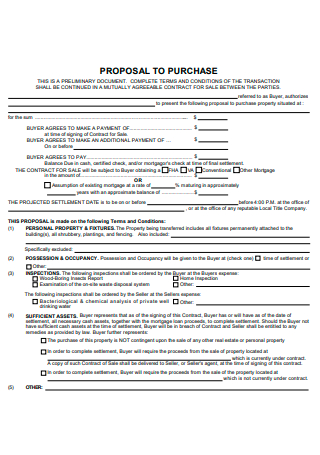
Property Purchase Proposal Example
download now -
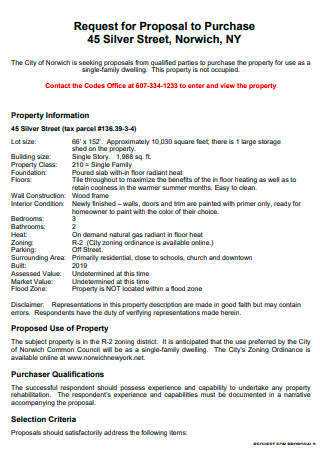
Property Purchase Proposal in PDF
download now -
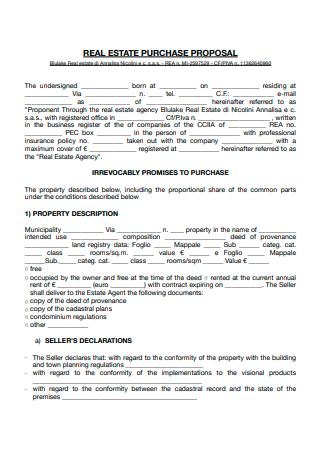
Real Estate Property Purchase Proposal
download now -

Simple Property Purchase Proposal
download now -

Library Property Purchase Proposal
download now
FREE Property Purchase Proposal s to Download
23+ Sample Property Purchase Proposal
What Is a Property Purchase Proposal?
What’s Inside a Property Purchase Proposal?
Steps in Writing a Property Purchase Proposal
FAQs
What is property appraisal?
How do you find out who owns a specific property?
An example of a type of property is private property. What is it?
What Is a Property Purchase Proposal?
First of all, what does property mean? Well, it refers to a generic term that describes anything that an individual or a business holds a legal title over. When a property has a legal title over it, it basically means that there are certain enforceable rights that exist concerning the said property. Property can have many different examples such as tangible property, with the most recognizable one being real estate property, or it can be something like vehicles, construction equipment, and so on, and intangible property which refers to patents, licenses, trademarks, and so on. Whenever they hold monetary value, properties can be considered assets.
What is a property purchase proposal? It basically refers to a business document in which the agent gives a comprehensive plan for the property they are selling as well as what they want to accomplish for their customers. The proposal thoroughly specifies the scope of work so that the customer understands what the agent wants to accomplish with the property, how much it will cost, and how much time it will take. It provides consumers with the entire strategy without requiring them to sign any contracts.
What’s Inside a Property Purchase Proposal?
Here are the elements that you need to keep in mind when you write a property purchase proposal; As mentioned earlier, a real estate property proposal is one of the most recognizable examples of a property purchase proposal, so this example may contain some elements that are present in a real estate property proposal.
Steps in Writing a Property Purchase Proposal
This section of the article contains the necessary steps you should take when writing a property purchase proposal.
-
1. Introduction
The first step of writing the property purchase proposal is by beginning with the introduction of the document. The beginning section of the proposal document may be brief, but it is critical since it will entice the customer to read the remainder of the paper. The key to the introduction is to find out what the customer actually wants rather than boasting about yourself, how many properties you’ve sold in your career, and what you do.
-
2. Details
After starting with the introduction and getting the client hooked with the proposal, proceed to this step, in which you begin to write the details of the proposal. This is the section of the document where you get down to the business. This part should provide a detailed outline of what you could accomplish for the customer. The more you describe here, the more confident the customer will be that the property is in safe hands. There should be a portion where the customer is informed about their share of the transaction and what they need to do to have their property sold swiftly. Furthermore, having everything in writing reduces liability in the event that something goes wrong later on.
-
3. Estimated Timeline
After providing the important details of the transaction, proceed to this step, which is to write down the estimated timeline of the transaction. No real estate agent can predict how long it will take to sell or rent a property. They may, however, ensure the things over which they have authority. This component of the proposal specifies how long it would take the agent to visit or evaluate the property, assess it, take pictures, write the description, and publish the listing. The goal of this part is to inform the client when they may anticipate their deliveries. Surprisingly, despite their importance, real estate agents frequently overlook this part.
-
4. Pricing
After providing an estimated timeline on when the deliverables can be fulfilled, the pricing section then follows. The essential thing to remember while writing this step is to keep your price as clear and basic as possible. It is frequently discovered that offering upsells reduces your chances of earning the client’s business. The greater the client’s options, the less probable they are to accept the proposal.
-
5. Guarantees
After providing the pricing of the property, it’s time to sort out the guarantees. Even though you can not truly promise when a property will be leased or sold, you may increase the client’s confidence in dealing with you by providing a firm guarantee. Keep in mind that if guarantees are included, the risk is on the agent, which is why agents dislike this section.
-
6. Terms and Conditions
After providing a guarantee for the client of the proposal, proceed to this final step. You need a part that includes terms and conditions no matter which type of properties you lease and sell or who your client is. The goal of this piece is to reassure the customer that they are taking the proper decision because you are legally required to do your portion of the task. This area is very helpful because if something goes wrong, both you and the customer may refer to it.
FAQs
What is property appraisal?
The process of estimating the worth of the real estate is referred to as property appraisal. And fair market value (FMV) means the price a property would sell for in a reasonable length of time, assuming both the buyer and seller are fully informed about all aspects of the property. To arrive at a proper value, the appraiser must collect relevant data and employ one or more methodologies. After doing so, he or she will next explain the evaluation judgment in the final value reconciliation.
How do you find out who owns a specific property?
There are many ways to do so. One is to use the internet, but this is usually unreliable since dubious inputs can be present or no inputs may be present at all. One reliable way is to talk to a title company. At a cost, a title company may do title searches and investigate property deeds for you. A title search will not only help you discover the owner of the property, but it will also look for any concerns with the property. This stage is essential to the property buying process, but you may perform it early to learn more about the property.
An example of a type of property is private property. What is it?
Every property owned by a normal individual or a private body is considered private property. Personal, physical, tangible, and immaterial assets, including intellectual property, are all classified as private property. Private property is not accessible to the general public and is not held by the government. Governments, on the other hand, can take ownership of private property under specific conditions, such as eminent domain.
Purchasing a property is never an easy task since there are a number of factors that should be taken into account, including writing an effective property purchase proposal. When effectively done, the transaction should go smoothly and clarifications raised should be properly resolved. In this article, there are different sample templates that are present and readily available for you to have a look at or use as a reference in case you need to prepare this type of document.
